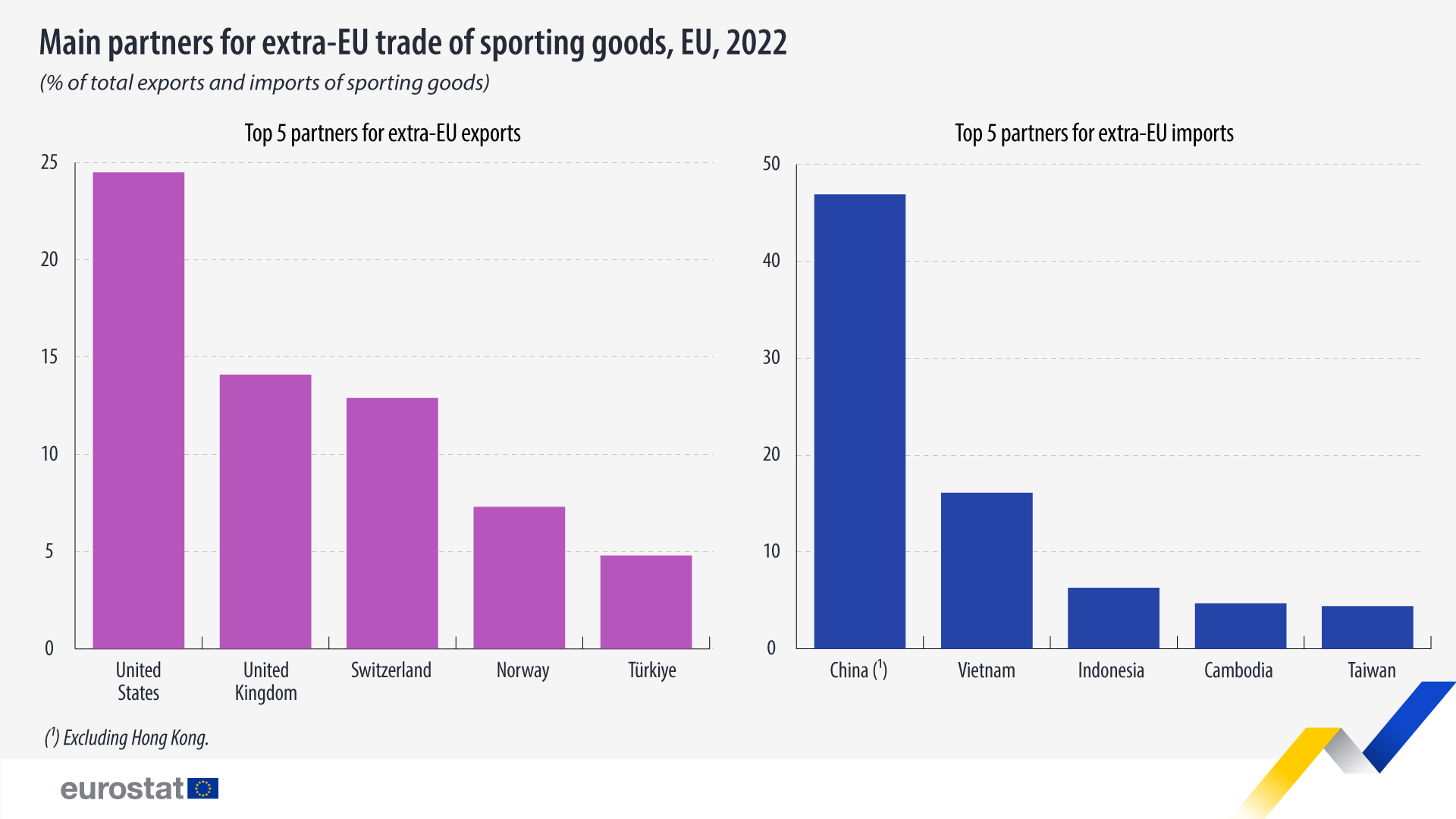EU exports and imports many products, and sporting goods are no exception. This group of products includes equipment for sports activities (e.g. fishing, water sports, athletics, golf), clothing (swimwear and footwear) and some articles that can be used for sports and leisure activities (e.g. boats, rackets and bicycles).
In 2022, extra-EU exports of sporting goods were valued at €7.5 billion, an increase of 10.9% compared with 2021 (€6.7 billion).
The three most exported sporting goods were in categories ‘boats and water sport equipment’, ‘gymnastic, athletic and swimming equipment’ and ‘sports footwear’. Altogether, they accounted for 62.4% of the value of sporting goods exported outside the EU, with ‘boats and water sport equipment’ representing 28.2% ‘, gymnastic, athletic and swimming equipment’ 20.7%, and ‘sports footwear’ 13.5%.
Source dataset: sprt_trd_prd
EU imported €14.3 billion worth of sporting goods in 2022
In 2022, the EU’s total value of sporting goods imports amounted to €14.3 billion, up 17.6% compared with 2021 (€12.2 billion).
The three main groups of imported sporting goods accounted for almost two-thirds (64.2%) of the value of extra-EU imports. The ‘sports footwear’ category represented the highest share of imports with 28.8% of all imported sporting goods, followed by ‘gymnastic, athletic and swimming equipment’ (25.9%). In third place was ‘bicycles’ (9.5%).
US and China: main trading partners
In 2022, in terms of value, the leading extra-EU destinations for exported sporting goods were the United States (24.5%), the United Kingdom (14.1%) and Switzerland (12.9%), which together accounted for more than half (51.5%) of the total value of exports of sporting goods. In fourth place came Norway (7.3%) and then Türkiye (4.8%).
In 2022, China was the main import partner with almost half of the EU value for imports of sporting goods (46.9%), showing an increase of 3.4% since 2021 (€6.5 billion to €6.7 billion). The second highest share belonged to Vietnam (16.1%), followed by Indonesia (6.3%), then Cambodia (4.7%) and Taiwan (4.4%).
Source dataset: sprt_trd_prt


